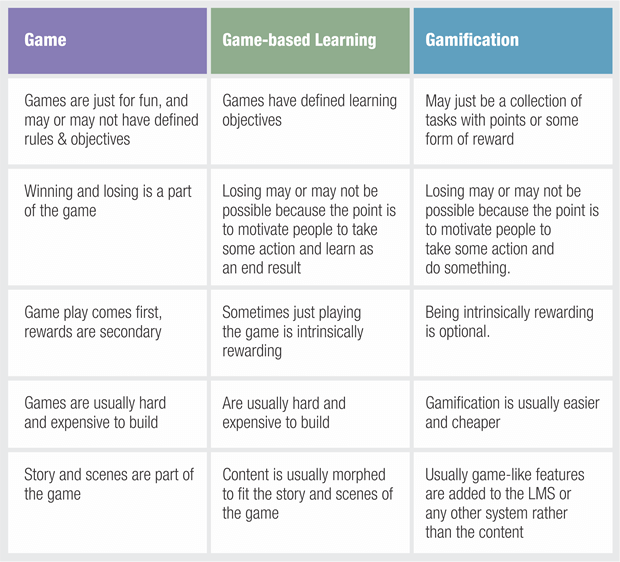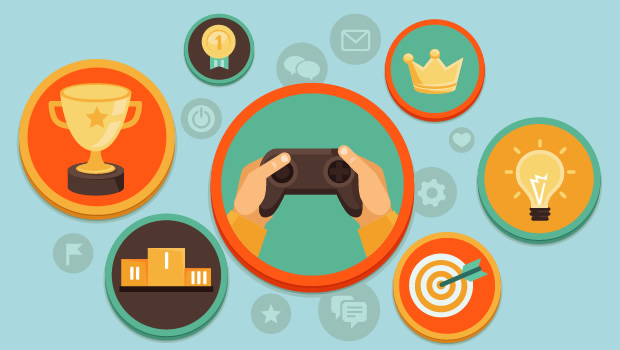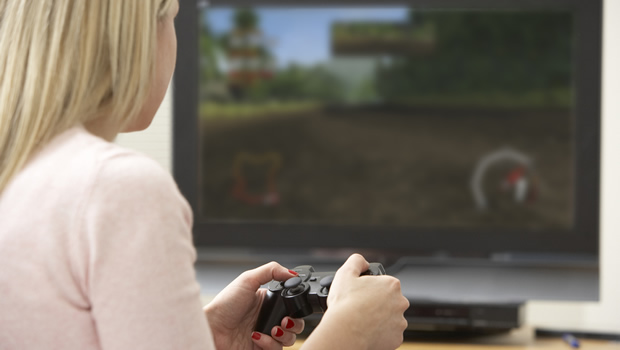Scene:
Sales meeting between executives of a leading learning service provider and an organisation planning to outsource its learning content development.
Client: This year, for our Sales training program, we would like to have a game designed.
Sales Manager: What exactly do you want in the game?
Client: Just some simple achievement levels and awards maybe…
Sales Manager: Oh! You mean gamification.
Client: What is that? Is it a new type of game?
Sales Manager: No, no…It’s a concept of applying game mechanics and game design techniques to engage and motivate people to achieve their goals.
Client: Oh! So, that’s like Game-based learning, right?
Sales Manager: Well…not really! There is a very thin dividing line between Game-based learning, Gamification and Games. I could explain it to you, if you want me to.
Does this give you a sense of déjà vu? If yes, that’s because every now and then we come across these three terms – Games, Game-based Learning and Gamification – that sound similar but are different in their own ways.
So what are Games, Game-based Learning and Gamification?
The simplest definition of games would be ‘activities in which participants take part for enjoyment, learning or competition’, sometimes they can even discover promos for these games. The chief advantage of games in learning is the drive and engagement they create, and the fun-factor they bring in, that makes a boring task interesting. So, does that mean all games are a part of learning? Probably not. But, games can be designed in a way to deliver learning content, which essentially is Game-based learning.
Confused? Let’s break it down into simpler terms using an example.
Most of us are acquainted with the game Hopscotch. Wikipedia describes Hopscotch as a popular playground game in which players toss a small object into numbered spaces of a pattern of rectangles outlined on the ground and then hop or jump through the spaces to retrieve the object. This is an example of a Game.
Now, imagine the same game, but in terms of teaching odd and even numbers. Each rectangle contains a number, and players can use one-footed hops when landing on odd numbers and zeros, and two-footed hops for even numbers and symbols. The turn continues until they make a mistake, such as stepping on a line or hopping on an incorrect number. This is a classic example of Game-based learning.
Then, the next question might be, what is gamification? Take the elements of Hopscotch, and imagine it in an organisational level. For instance, the rectangles as levels, and the simple action of hopping as the task achievements. When an employee achieves a task, (s)he is given an award/badge and taken to the next level. In the simplest terms Gamification is the use of game elements, like rewards and achievement levels, in a non-game situation.
In context of eLearning, the differences are few and far between. Most of us recognise the name Minecraft, the video game that captivated thousands across the globe. The game has different elements, and allows building constructions out of textured cubes in a 3D world. The game also provides arena for exploration, gathering resources, crafting, and combat. Minecraft is a great example for games.
However, a few years back a New York City school teacher crafted a version of Minecraft for schools called MinecraftEdu. The elements of the classic game were enhanced to support the learning environment. Text blocks were added so that teachers could give students more context about whatever world that they created. Though the implementation has been restricted to few educational institutes, the power that Game-based learning possesses has been displayed and harnessed in real life too.
A popular example of Gamification is Deloitte’s Leadership Academy, which uses rank, rewards, missions and leader boards as one of the ways to encourage its employees and client companies to log on, take courses and continue corporate training despite busy work schedules.
To cut the long story short, here are the key differences:

#Note: Games can be directly used as learning modules for training on team work, and at times for mind exercises.
This is our understanding on Games, Game-based learning and Gamification. There might be some distinctions that we missed out on. What is your take on this? A penny for your thoughts.



















